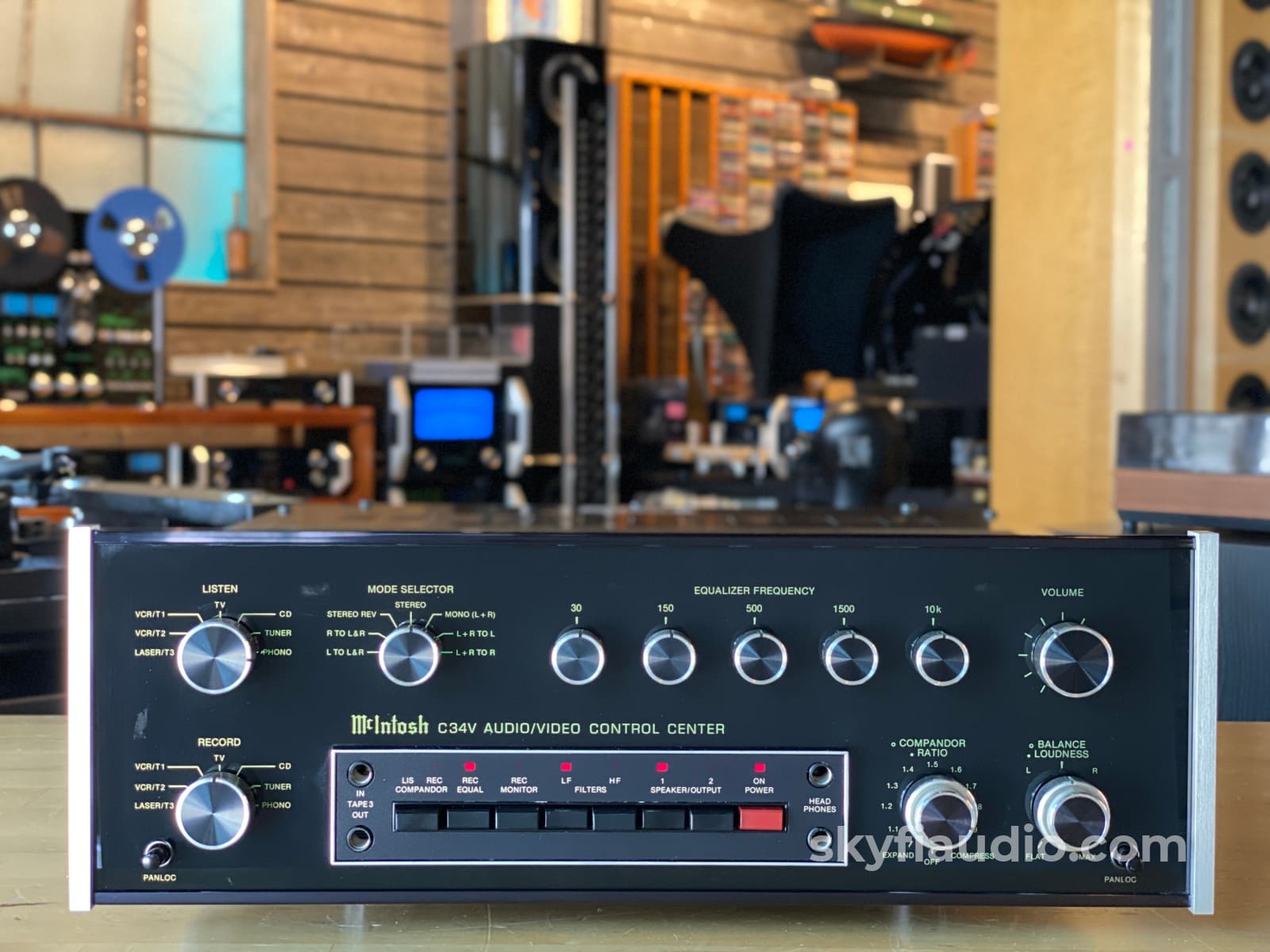
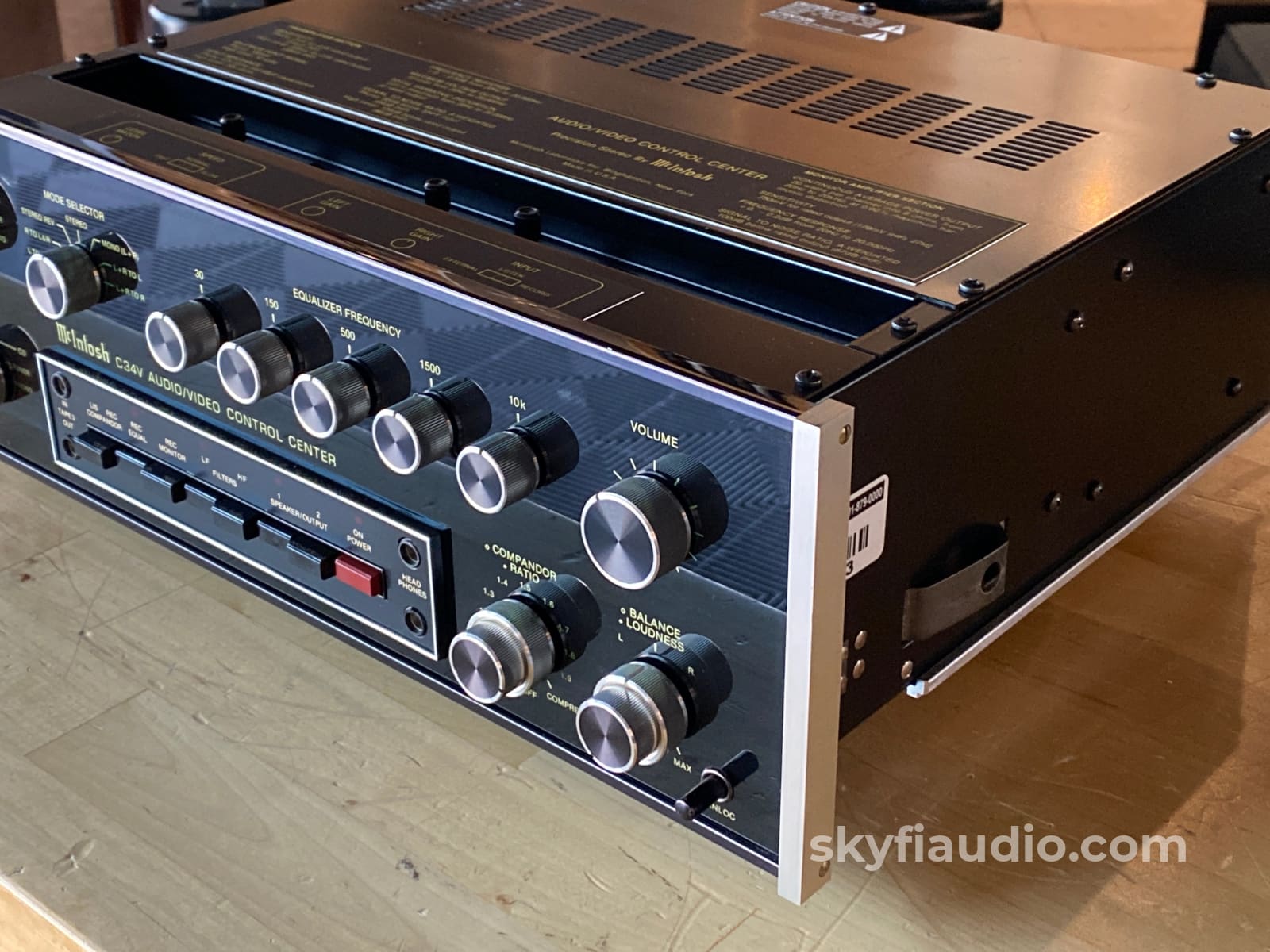
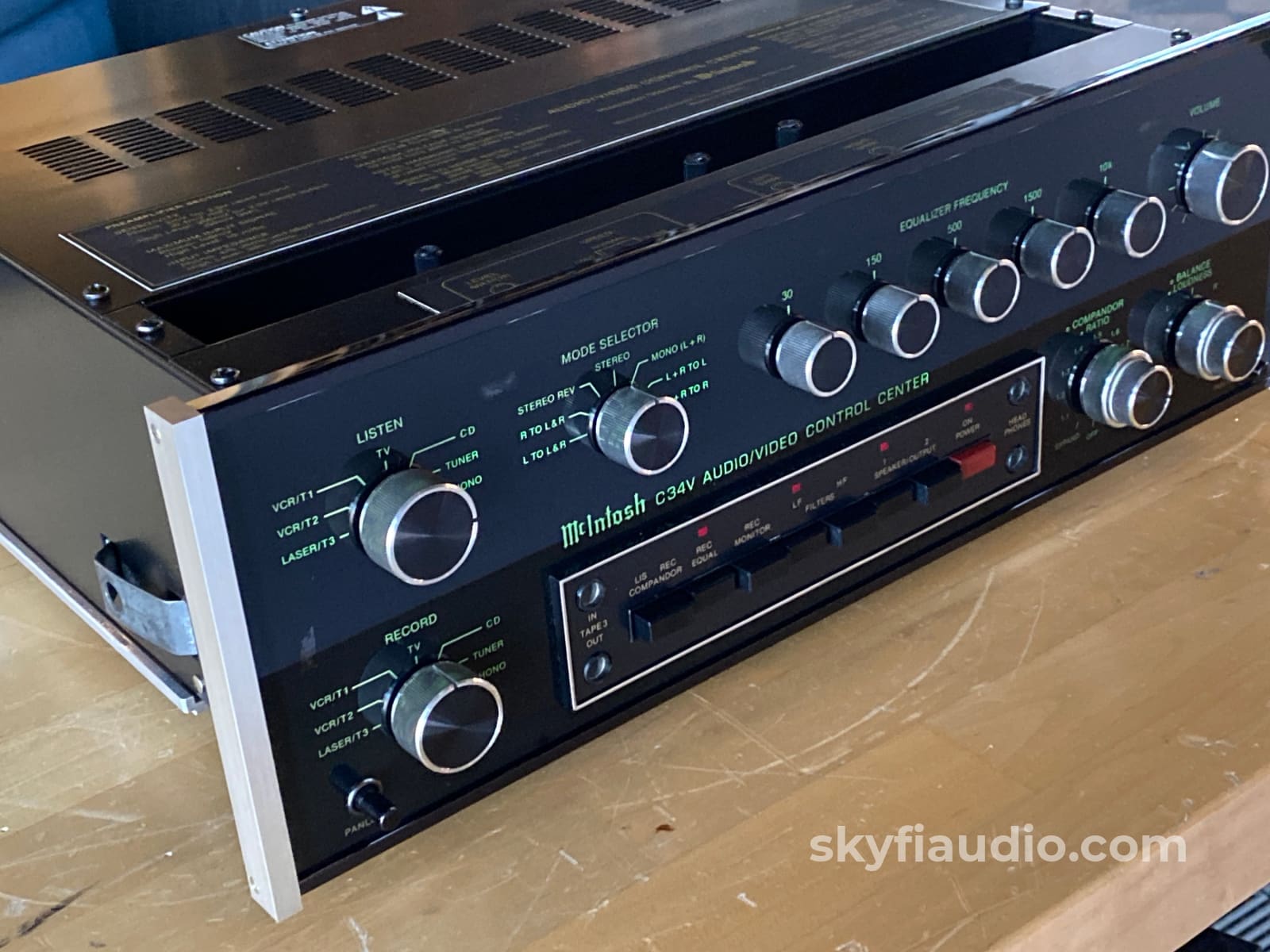
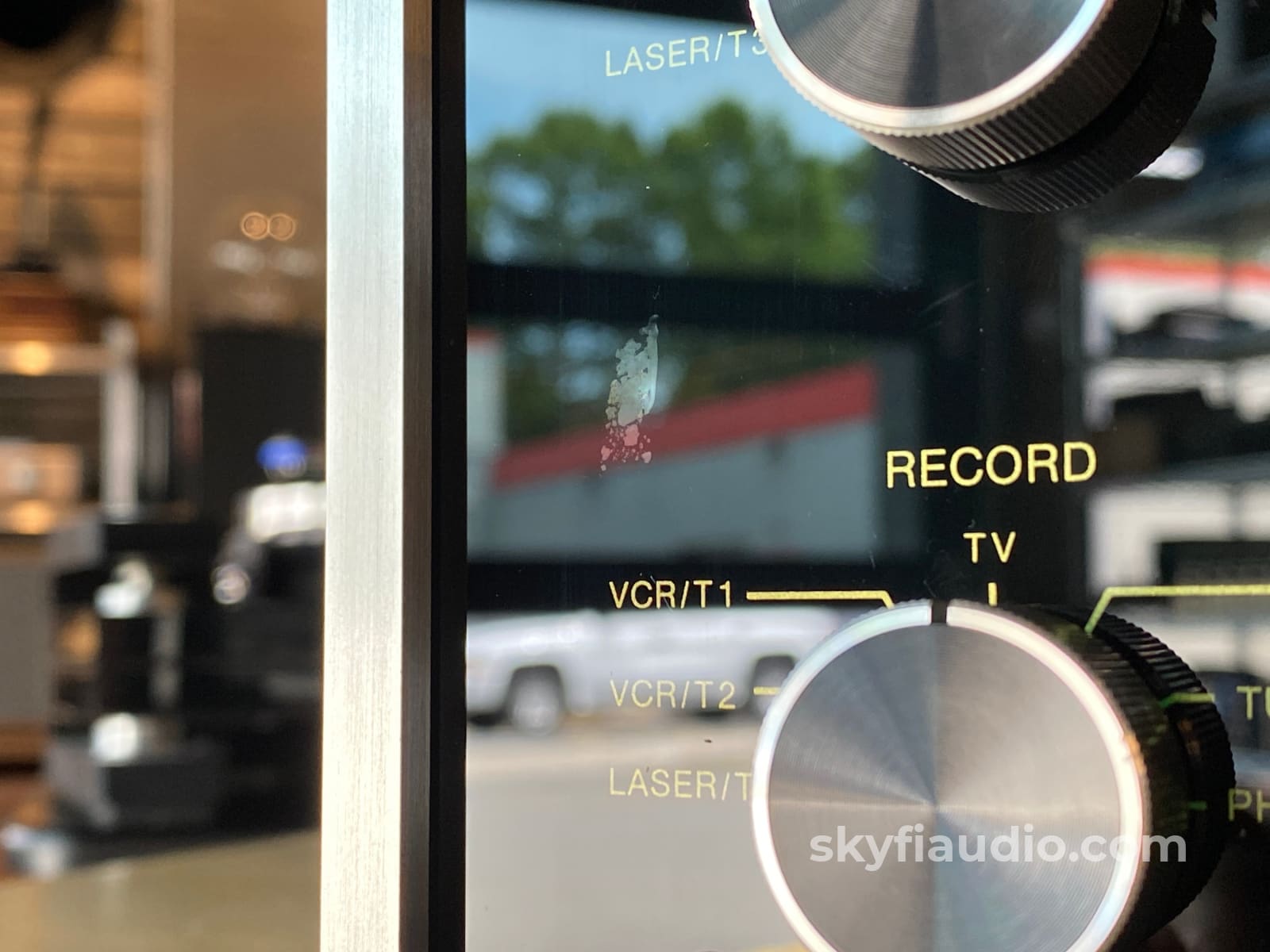
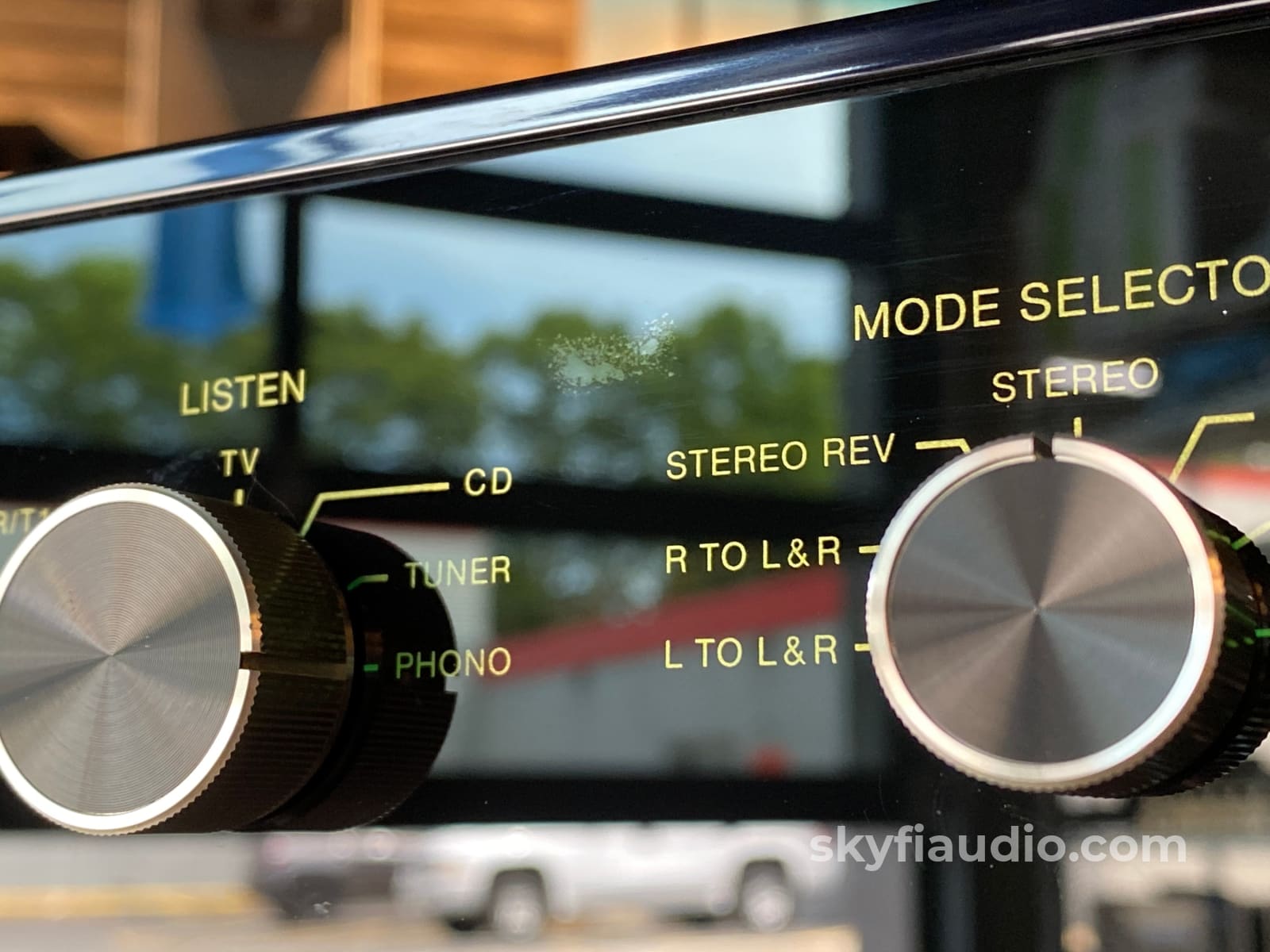
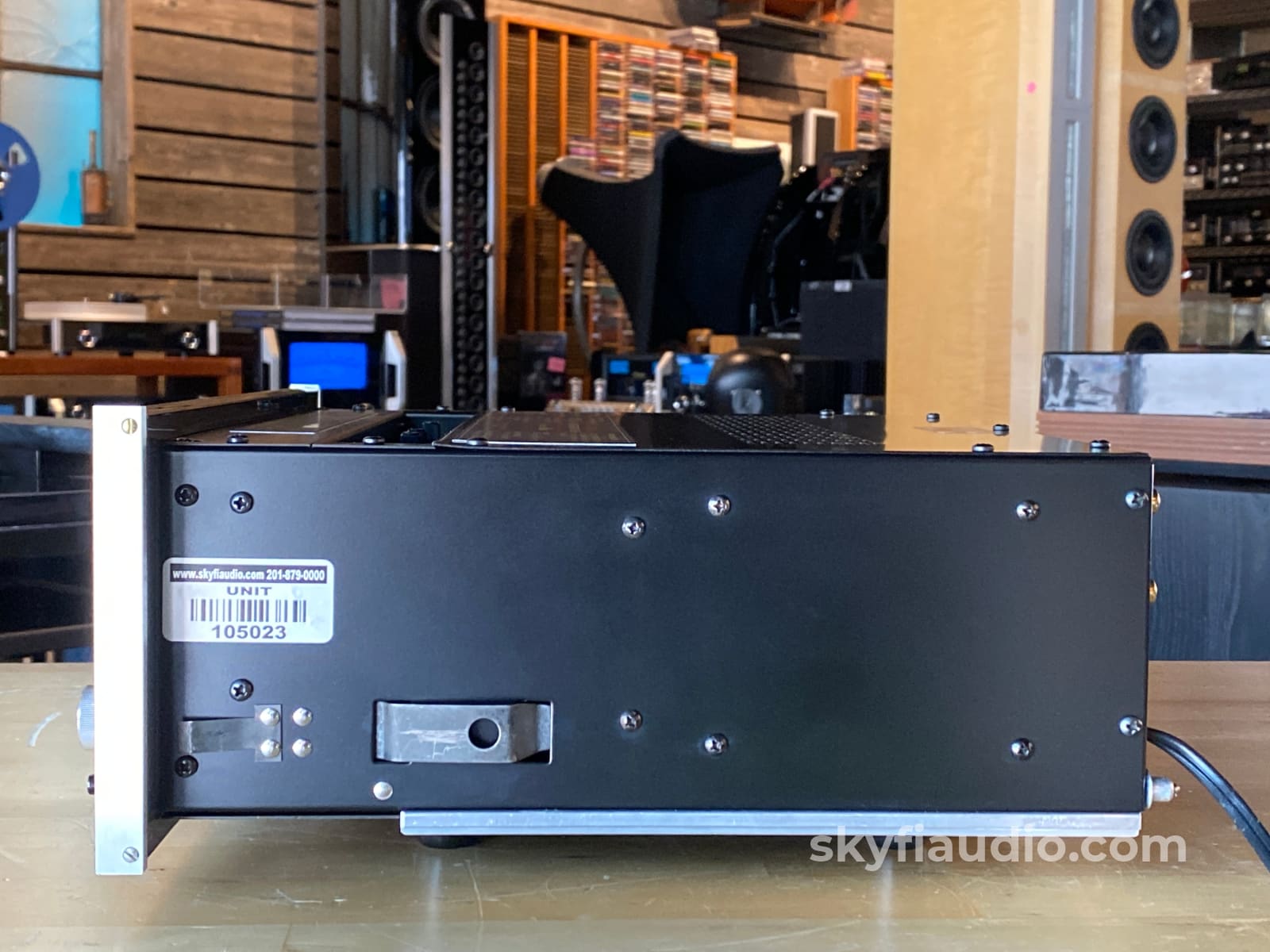
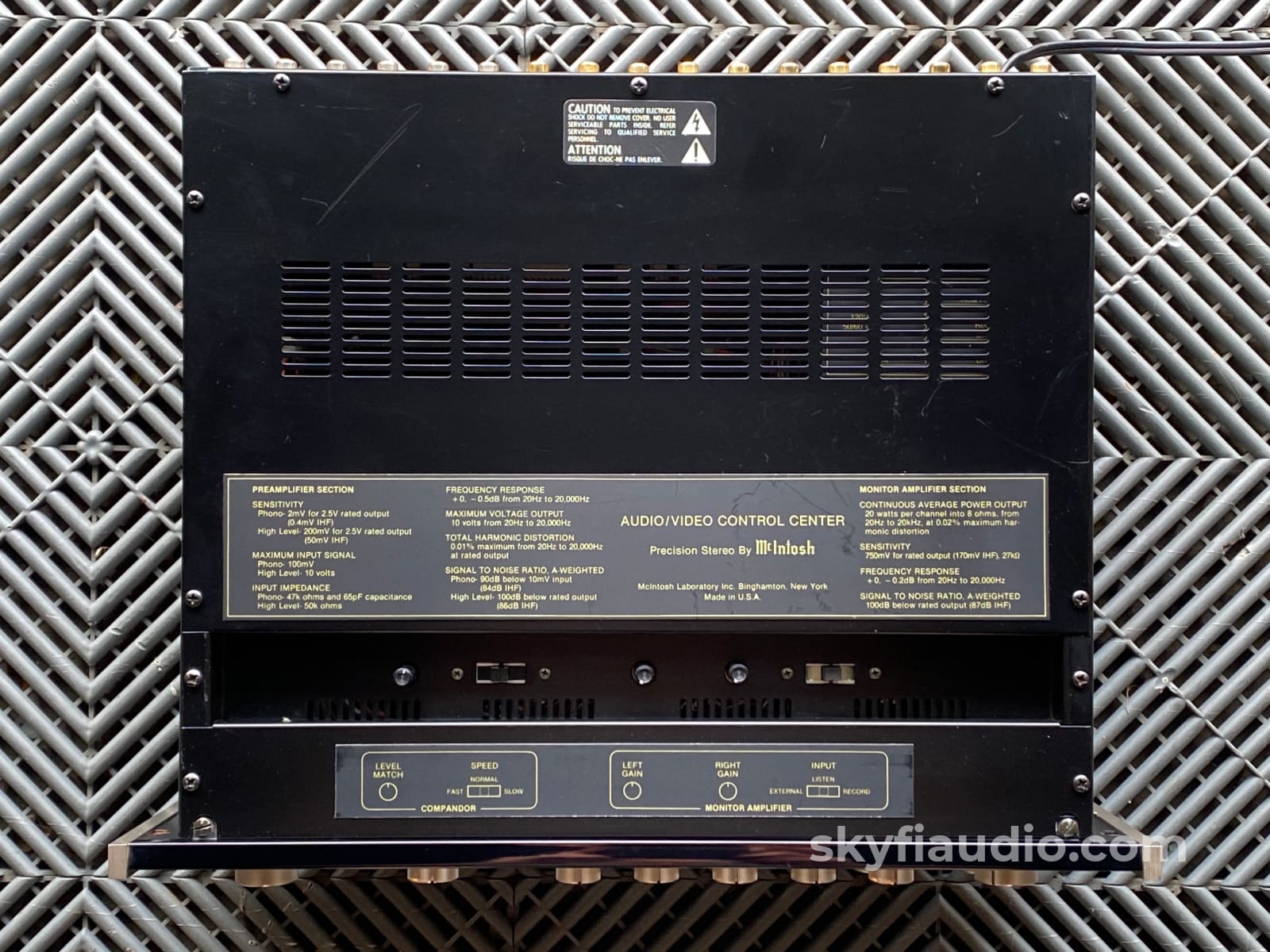
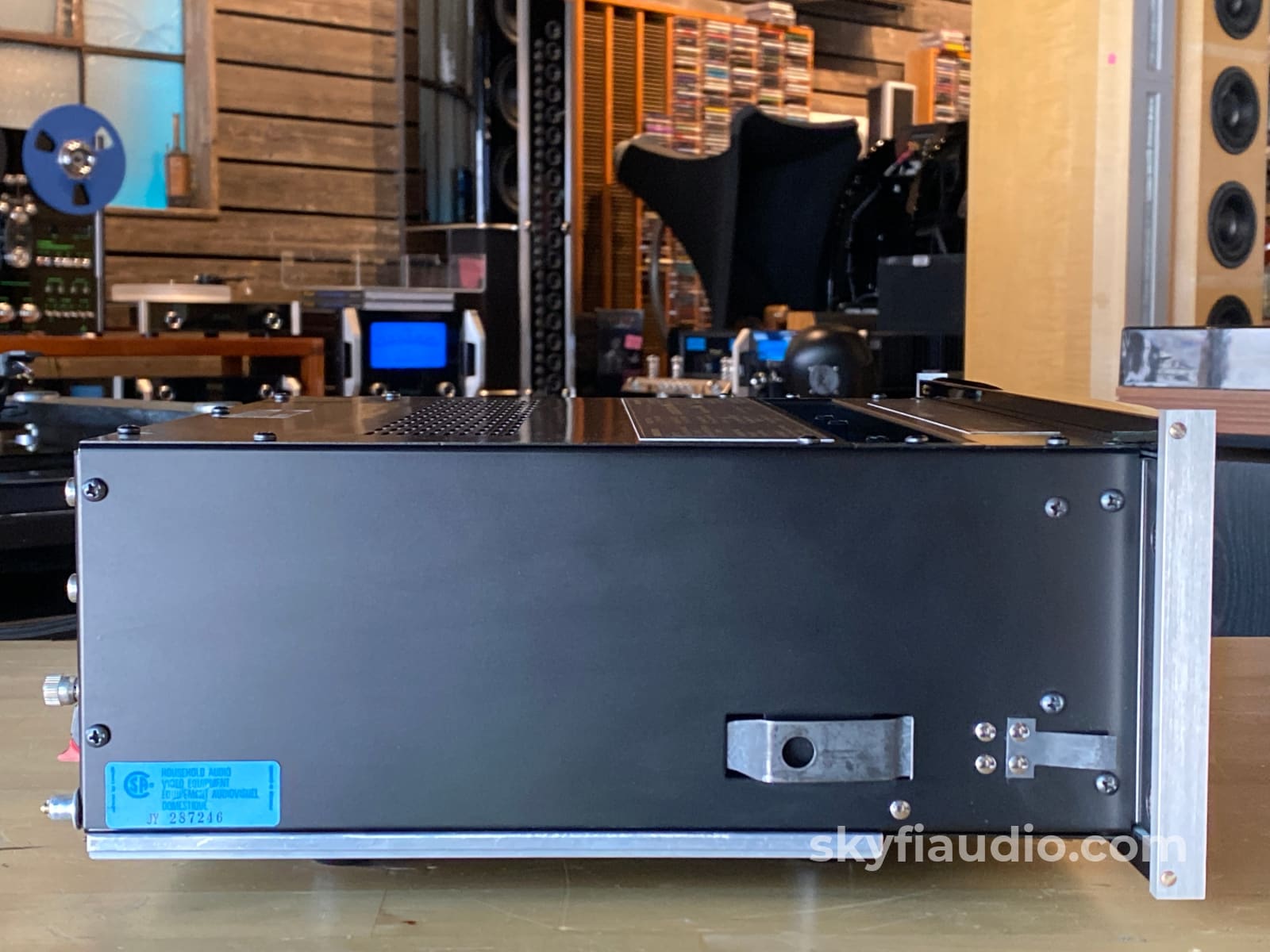
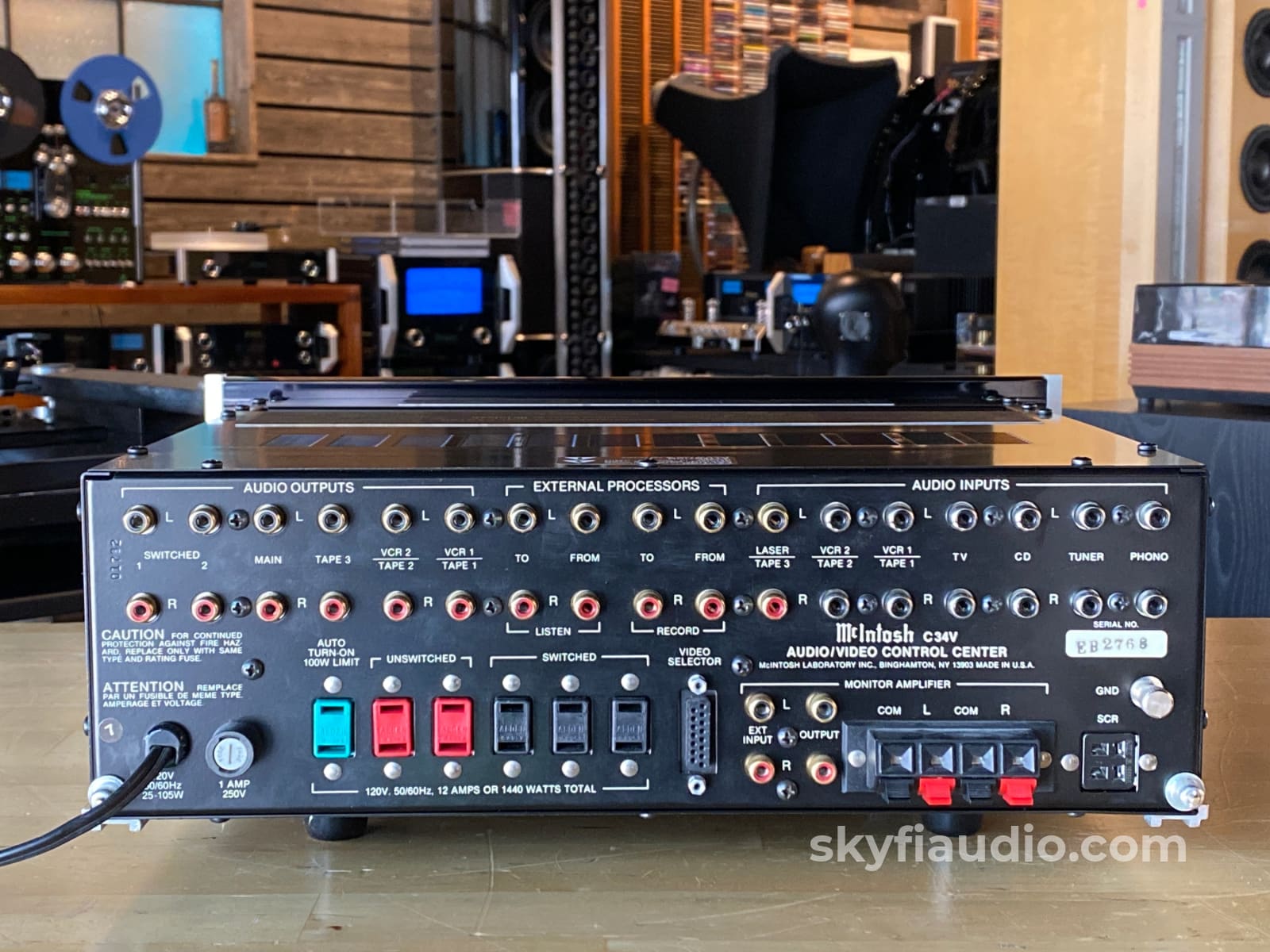
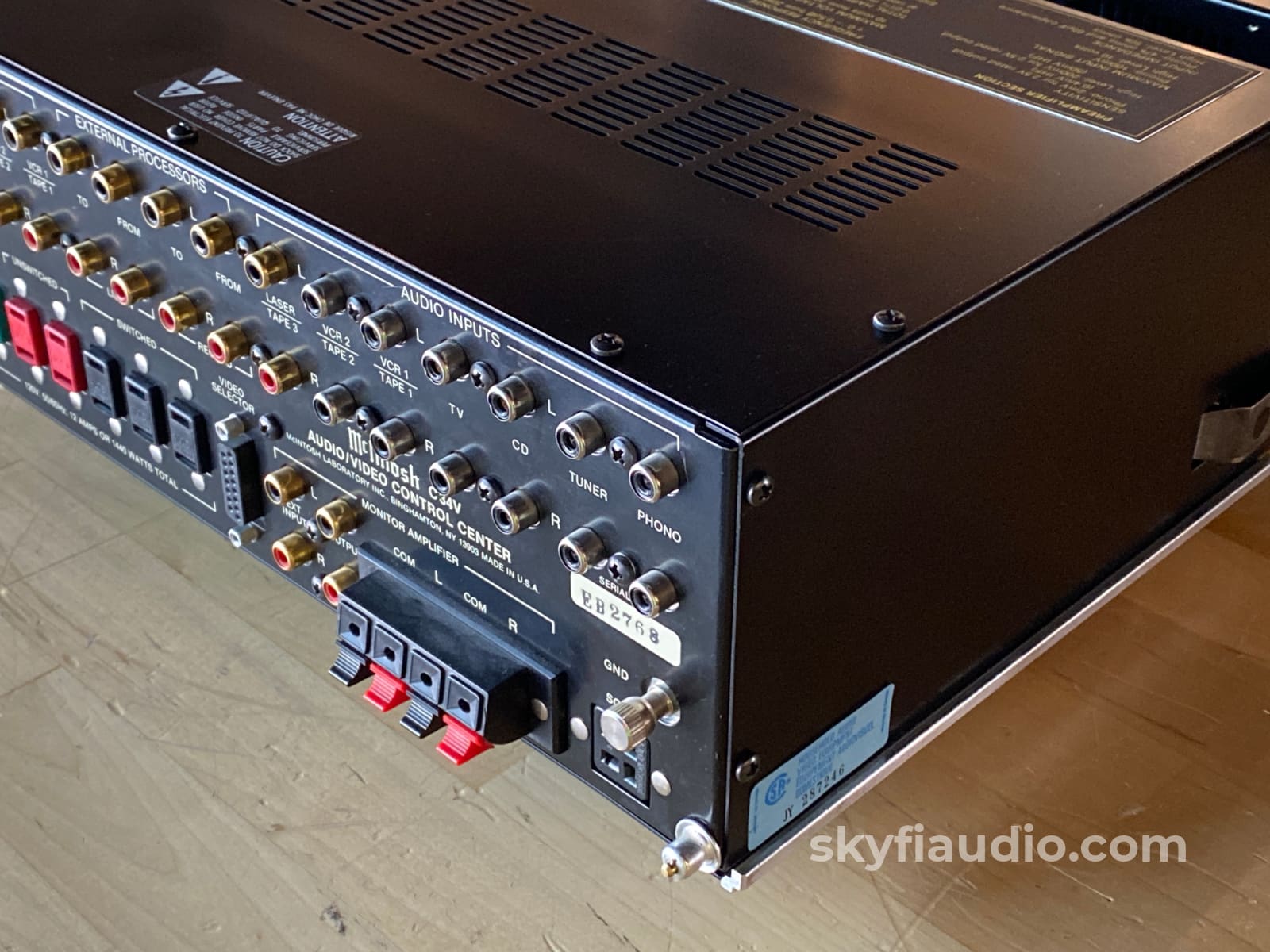
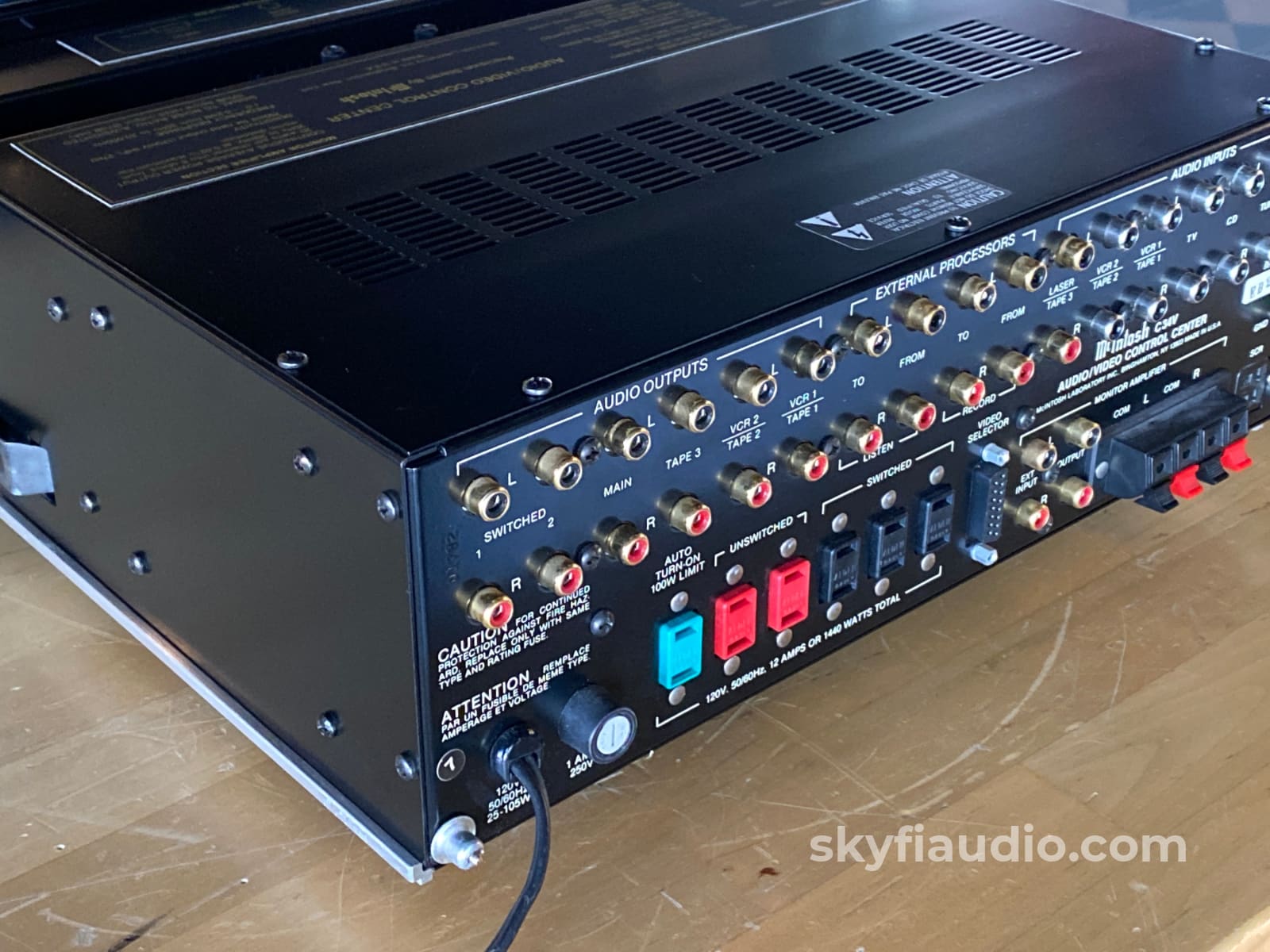
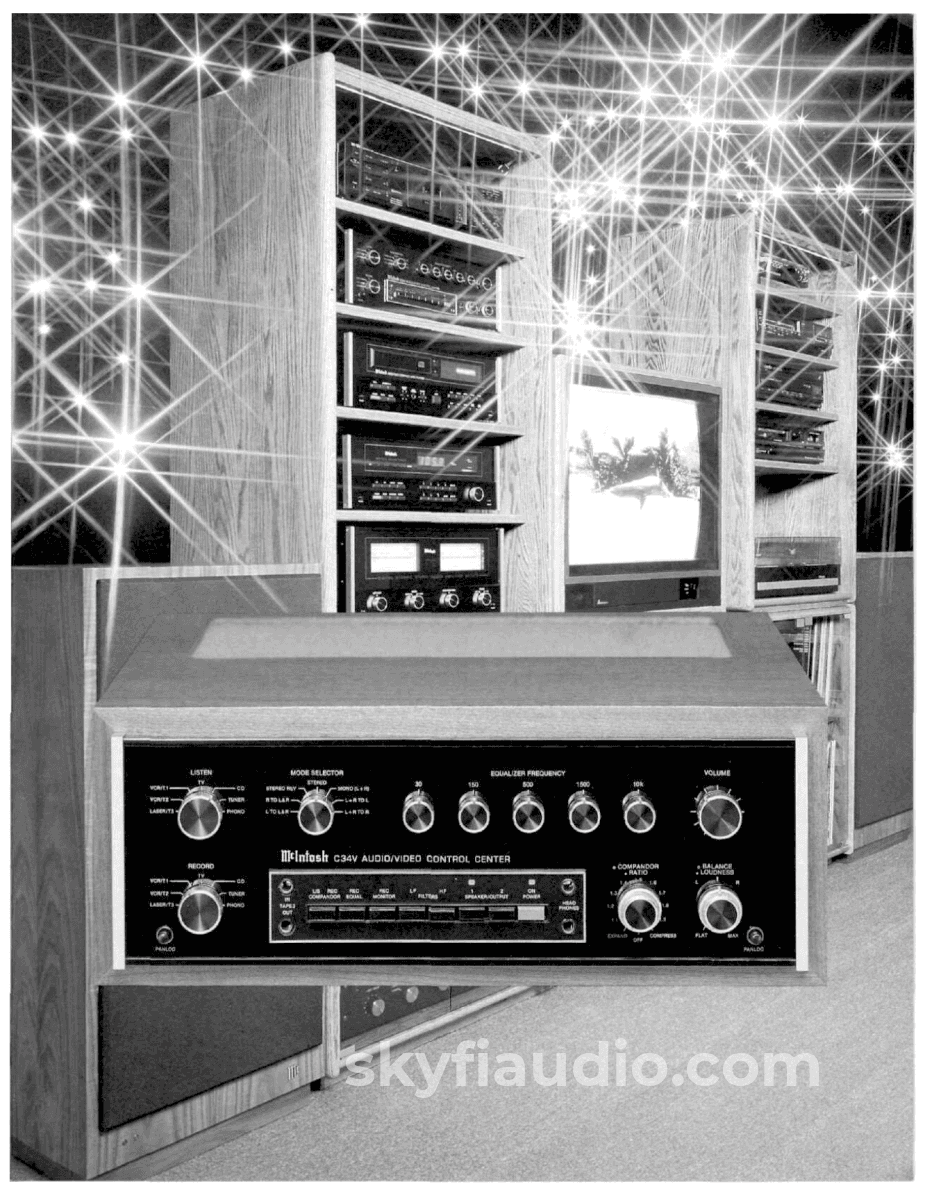
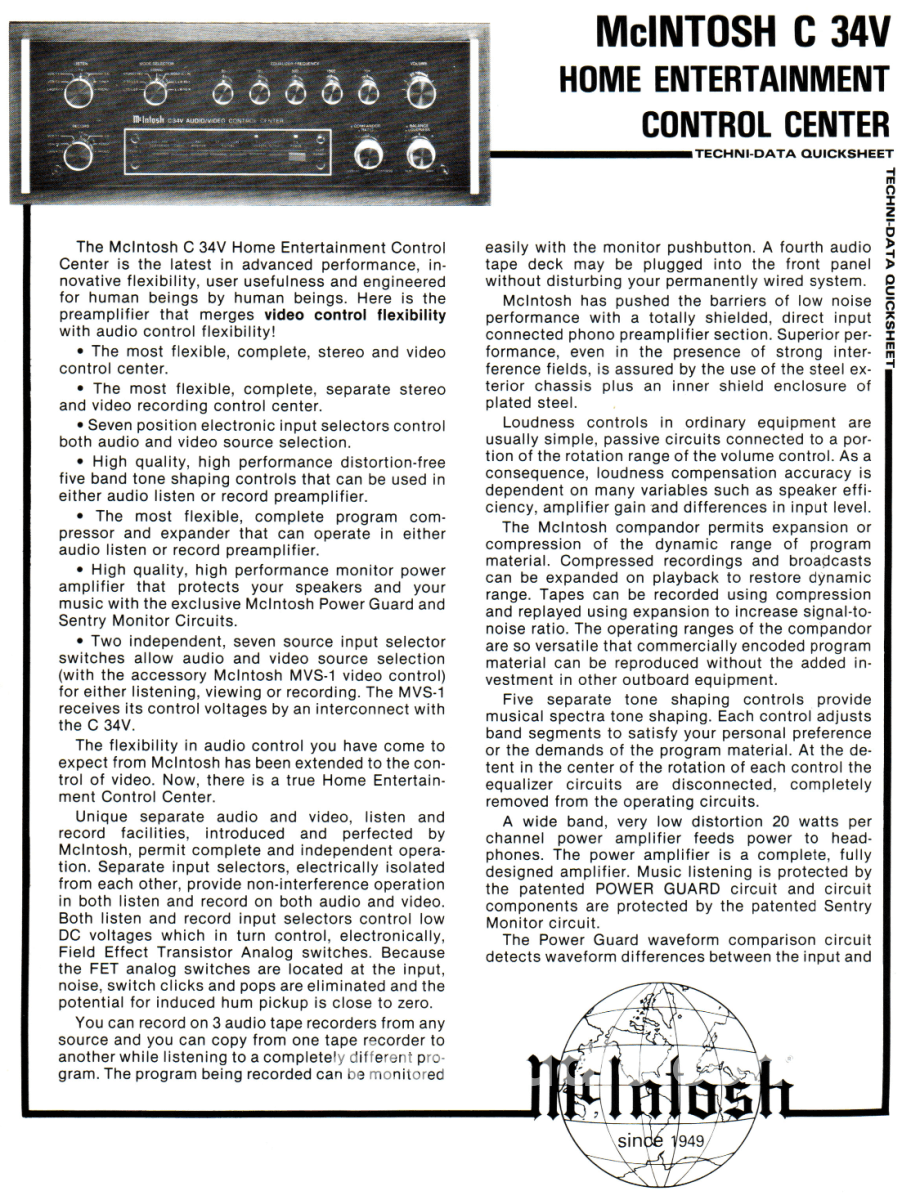
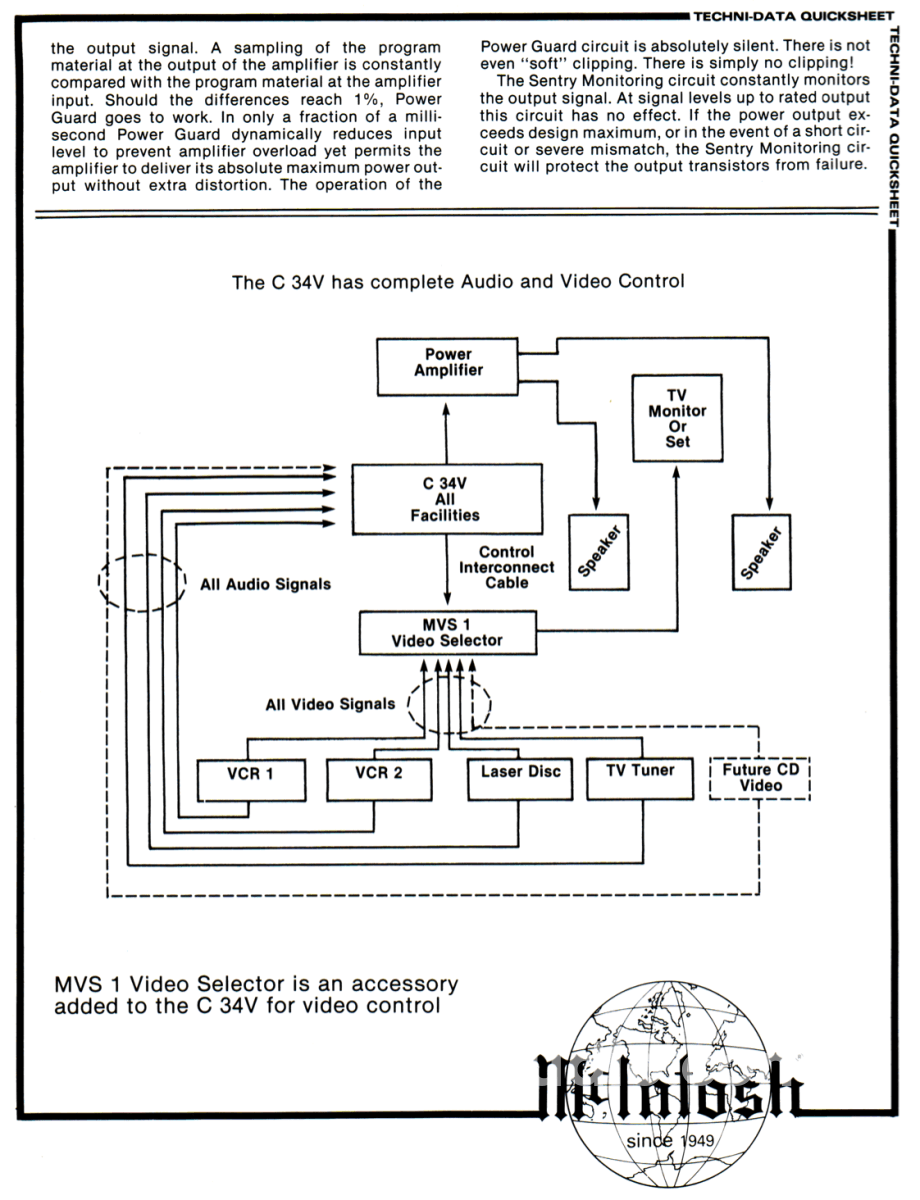
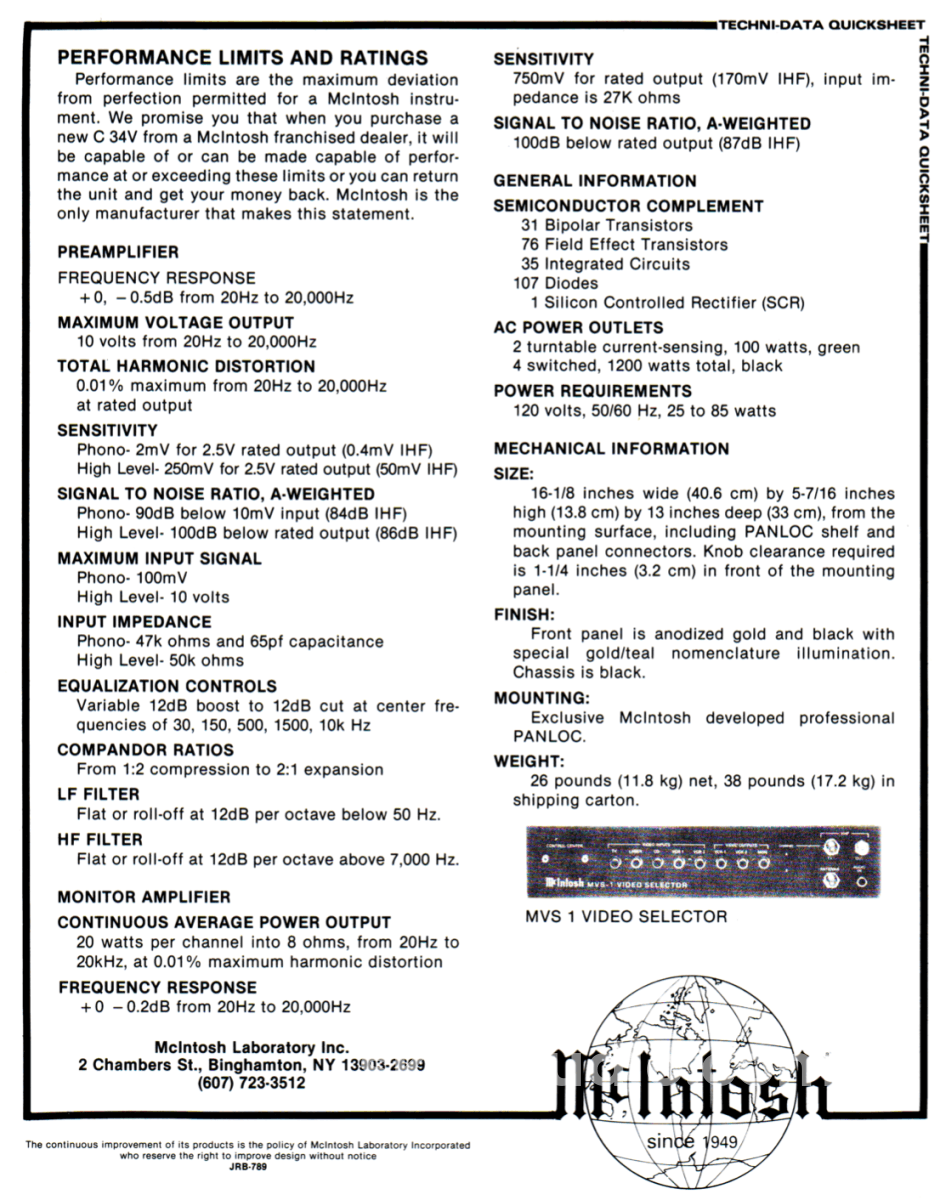
McIntosh C34V "Integrated" Preamp with 20W x 2 Amp Section and 5-Band EQ
Free Shipping on Most Electronics - Excludes Speakers and Items Requiring Freight - Contiguous U.S. Only
Pickup currently unavailable at SkyFi 479

McIntosh C34V "Integrated" Preamp with 20W x 2 Amp Section and 5-Band EQ
SkyFi 479
479 South Broad Street
Glen Rock NJ 07452
United States
General:
The very first vintage C34V into the shop, plus it's actually an integrated amplifier masquerading as a standard preamplifier!
The C34V preamp includes a built-in amplifier to power your headphones *or* speakers up to 20W per channel at 8 ohms.
An uncommon and super useful feature meaning this can actually be the heart of a smaller system in your home or office. Just add a turntable or streamer/DAC with speakers and you're ready to rock.
We're also big fans of these vintage McIntosh preamps thanks to their front panel EQ control knobs. Super easy to use when tailoring the sound to match your favorite vintage speakers.
Loudness is also adjustable vs the commonly found push-button on/off. Helpful to fine-tune late night listening sessions.
Other McIntosh performance features include:
• A five band front-mounted equalizer that adjusts and improves the loudness contrast of the five most important frequency ranges. Musical balance can be adjusted to compensate for listener preferences.
• A Moving-Magnet (MM) Phono Input uses a high technology integrated circuit operational amplifier. Its differential input stage has been optimized for low noise and low distortion performance.
• A compandor expands or compresses the dvnamic range of the program material. Compressed recordings and broadcasts can be expanded to restore dynamic range. Tapes can be compressed and replayed using expansion to improve signal-to-noise ratio.
• A precision output volume control is electronically trimmed during manufacture to maintain channel balance accuracy to a fraction of a decibel (dB). This high order of accuracy assures continuing program balance as the volume is changed.
• An active circuit loudness control is electrically independent of the volume control. Close conformity to the Fletcher-Munson equal loudness curves can be attained, regardless of the volume control position.
Brand Background:
McIntosh Laboratory is an American manufacturer of handcrafted high-end audio equipment based in Binghamton, New York. The company was founded in 1949 by Frank McIntosh. The company designs and produces audio amplifiers, stereo tuners and other consumer electronics products.
Ownership:
Second Owner
Cosmetic Condition:
7/10 = Good. One or two minor scratches. Well Maintained.. See our detailed rating description here.
Working Condition:
Working perfectly and tested in our lab and listening room.
Included:
Just the unit, shipping carton, and power cord.
Packing:
Will be packed using our highly developed in-house process and custom packing materials.
Dimensions:
16-1/8 inches wide (40.6 cm) by 5-7/16 inches high (13.8 cm) by 13 inches deep (33 cm), from the mounting surface, including PANLOC shelf and back panel connectors. Knob clearance required Is 1-1/4 inches (3.2 cm) in front of the mounting panel.
Weight:
26 lbs.
Approximate Age:
1989
Produced from 1985 to 1992, all C34V models feature an EB serial # prefix with the narrower 16-1/8" front panel width. Later McIntosh changed to the modern 17-1/2" width and these wider C34V's actuallyhave a different model # "C34V W" and contain a GK serial # prefix.
Link to Manual:
Click Here
Connections:
Single-ended RCA inputs and outputs for line level and phono (MM), speaker bare-wire inputs for monitor amplifier section, McIntosh proprietary SCR connector (Speaker Control Relay), McIntosh Proprietary computer-type connector for McIntosh MVS-1 Video Selector.
*McIntosh proprietary cables and McIntosh MVS-1 not included.
Recommended Cables:
Kimber Kable - RCA Interconnects - Better
Kimber Kable - RCA Interconnects - Best
Kimber Kable - Phono Interconnects - Better
Kimber Kable - Flagship Phono Interconnects - Best
Kimber Kable - Speaker Cables - Better
Kimber Summit Series Monocle XL Speaker Cables (PAIR) - Best
Kimber Summit Series BiFocal XL Bi-Wire Speaker Cables (PAIR) - Best If Applicable
The SkyFi Testing Process for Preamplifiers:
We start with a visual inspection of all internal components to make sure that there are no signs of heat stress or damage. Capacitors are checked for telltale signs of predictive failure including bulging, shrunken wrappers, or physical leakage. We also inspect the PCB’s for discoloration from resistors or transistors that may have been running hot. On vintage units we often spot check select capacitors for value and ESR.
When we first power on a preamplifier we connect its RCA output to a Sencore PA81 Power Analyzer which simulates real world loading conditions and gives us an oscilloscope interface. The first order of business is checking that the volume control works smoothly throughout its entire range with acceptable channel balance. This is accomplished by feeding a 1KHz sine wave into one of the preamp’s line level inputs while monitoring the preamp’s output on an oscilloscope. We then switch to a 1KHz square wave to test the tone controls, loudness function, and filters where applicable. During this step we are watching for equal alteration of the test signal by both channels. This also helps us identify dirty controls that will need treatment. Once the basic line stage functions are verified, we test each input individually. This is especially important for devices that use relays to select their sources. If the preamp is equipped with a phono stage we test that as well. We use an inverse RIAA filter which allows us to feed a reference test signal into the phono input with the proper RIAA equalization and level. A square wave or sine sweep is used to verify that the device’s phono stage is faithfully reproducing the RIAA curve. If the preamp under test has balanced inputs and/or outputs these are tested as well.
We finish up our bench testing with a listening test with our bench amplifier and reference speakers. During this test we check for hum or hiss that may not have shown up in earlier testing. We also check that all of the tone controls and filters perform as expected. If the preamplifier has remote control functions these are also tested. Preamps with tube circuits or complicated power supply topologies are connected at our long term test rig for extended stress testing under real world conditions.
The SkyFi Testing Process for Solid State Amplifiers:
We start with a visual inspection of all internal components to make sure that there are no signs of heat stress or damage. Capacitors are checked for telltale signs of predictive failure including bulging, shrunken wrappers, or physical leakage. We also inspect the PCBs for discoloration from resistors or transistors that may have been running hot. On vintage units we often spot check select capacitors for value and ESR.
If the amplifier passes visual inspection, we move on to a controlled power on sequence using a Sencore safety analyzer to monitor current draw in real time. Once the amplifier is determined to be safe to operate, we connect it to full AC mains for function and power testing. We connect the speaker outputs of the amplifier to a Sencore PA81 Power Analyzer which acts as a dummy load, DC offset monitor, and oscilloscope interface. We start with a low level 1KHz test signal at the amplifier’s input and slowly increase its amplitude while monitoring the output on an oscilloscope for signs of noise, clipping, distortion, or improper channel balance. We continue increasing the signal level until the amplifier reaches clipping. At this point we take an output power measurement and compare it to the spec sheet of the amplifier to verify proper performance. If the device under test has both balanced and single ended inputs they are both tested at this time. We finish off the bench evaluation with a 1KHz square wave check and a 20Hz to 20KHz sine sweep to assess the amplifier’s frequency response characteristics. This battery of tests will usually reveal if the amplifier has any issues that need further attention.
Before the device leaves the bench, we perform a listening test with actual music using a variety of preferred test tracks. Our benches are outfitted with familiar monitor speakers which help us identify inconsistencies that will not always show up on our test gear. The main things that we are listening for are hum or noise with no signal present, proper center image, clicks, pops, or any other obvious undesirable audio characteristics.
If the unit passes all of these tests it is moved to our long term testing rig where we simulate real word operating conditions for 6-8 hours. This allows us to monitor the unit for signs of thermal runaway or intermittent issues that only crop up when the unit has fully come up to temperature.
Choose options
